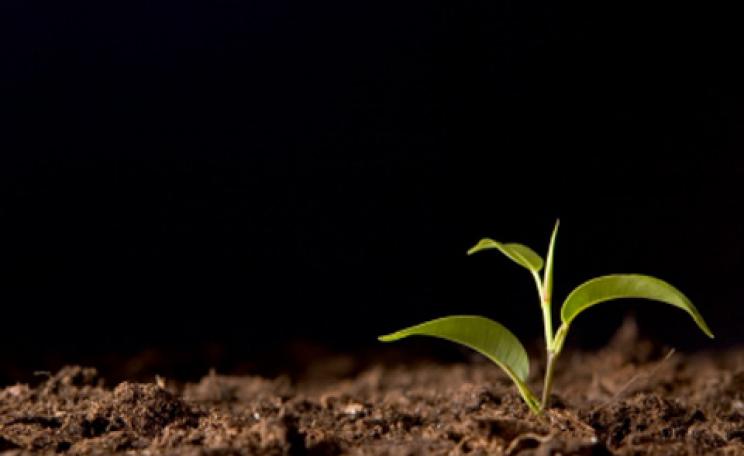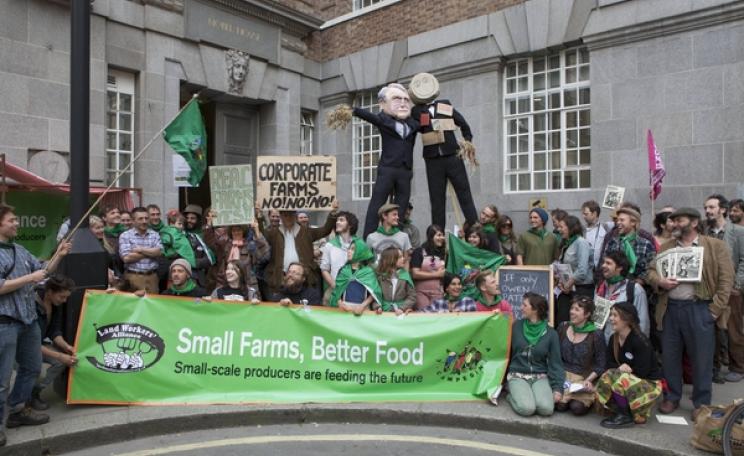On Saturday 12 December, Copenhagen University hosted a meeting of the biggest names on the global agriculture scene; the Food Agriculture Organisation of the UN, the International Fund for Agricultural Development and the Consultative Group on International Agricultural Research, who all came together to discuss one thing: what does Copenhagen mean for agriculture?
Despite coming up with little in the way of concrete demands to present to the conference centre delegates, the meeting did highlight what could potentially be the make-or-break deal that seals Copenhagen’s place in history: a decision on whether agriculture - or more specifically soil carbon sequestration - will be eligible for carbon trading under the Clean Development Mechanism (CDM) funding scheme.
Soil for sale
For a sector which the IPCC says is responsible for fully one-third of combined global greenhouse gas emissions, and as an industry charged with achieving cuts in the region of 800 megatonnes of carbon per year while at the same time doubling productivity to feed 9bn people by 2050, agriculture has played a surprisingly low-key role in negotiations so far.
This partly because the science is controversial. Ever since the 1992 Rio Earth Summit the potential of mitigation through agricultural services has been dogged by the lack of scientific consensus on mitigation figures. In 2007, however the IPCC recognised that the world’s soils have the potential to sequester an estimated 6 billion tonnes of carbon dioxide equivalent each year, opening the doors for agriculture’s carbon-trading proponents to flood in.
And flood they have. Within the past two years, the UNFCCC has been lobbied by successive international organisations, governments and private companies - from the United Nations Convention to Combat Desertification to Monsanto and the House of Saud - falling over themselves in anticipation of what trade in soil carbon credits could ultimately mean for their bottom lines.
And who can blame them? In 2008 4.9bn tonnes of CO2 were traded globally, an 83 per-cent increase on 2007 levels. With carbon trading tipped as the next boom economy, the world’s 1.6bn hectares of cultivated land represent a mouth watering opportunity for future investors. It is estimated that the US could see an annual gross revenue of over $100bn from domestic carbon offsets alone, nearly 50 per-cent of its current agricultural GDP.
Farming under the UN
So what would the ‘agricultural methods’ recognised by the CDM as eligible for carbon credits look like? Subsidies for reducing the use of fossil fuels in agriculture perhaps, or for adopting organic farming? It seems unlikely.
Helena Paul from the public interest and scientific research organisation Econexus, which has recently released a policy document - Agriculture and Climate Change; Real Problems, False Solutions - summarises what’s on the table this week:
‘Firstly, some want no-till agriculture to be included in carbon trading, including the CDM, claiming soil carbon emissions are reduced by not tilling the soil. In reality however, the majority of no-till is carried out by large-scale producers using GM herbicide tolerant crops in combination with applications of herbicide, plus chemical fertilisers and insecticides.
‘Secondly, biochar, which is basically charcoal, has been proposed as a method of locking the carbon from biomass into the soil. However, apart from doubts about its effectiveness at large and small scale, especially in the longterm, this would require immense plantations as a source of biomass for the charcoal. These would also feed the market for biofuel as a co-product, offering double subsidies but also twice the incentive for destruction of forests and biodiversity.
'Thirdly, some also propose further intensification of livestock farming, saying that emissions can be significantly reduced through housing stock and “managing” manure to produce biogas. Once again it is big industrial producers that already benefit to the exclusion of the small.’
Carbon money to fund GM
Among the most controversial suggestions currently under consideration is the possibility of awarding carbon credits for growing GM crops.
The biotech industry is keen to highlight the potential of GMOs to cut emissions through claimed higher yields. The industry is also lobbying strongly against plans to prohibit patents on genetic resources that are considered essential to climate change adaptation.
At present it is estimated that around six per-cent of CDM funding goes to agricultural services, however this funding is, as Helena points out, intrinsically biased towards large-scale operators. In 2007 for example 90 per-cent of all CDM projects approved in Malaysia were awarded to palm oil monocultures, while in Mexico over half of all CDM funding is claimed by industrial swine units producing biogas from manure.
Some believe that a decision by the the UN to include soil carbon in its remit will be met by an explosion of the intensive farming systems best suited to exploit it. They fear that such a scenario - which could see the UN pour $1.5bn of funding into further intensification scheme - could have serious consequences, barely 18-months on from a global food crisis that pushed an estimated 90m people into food poverty worldwide.
Ed Hamer is a freelance journalist specialising in agriculture and globalisation issues. He is reporting from the Copenhagen climate summit
| READ MORE... | |
 |
NEWS ANALYSIS Audio: how much meat and dairy is sustainable? A new report by the Sustainable Development Commission warns that, for the good of our health and the environment, we must reduce our meat and dairy consumption. By how much, asks Louise Parry, in this exclusive audio report |
 |
INVESTIGATION Biochar: can charcoal really stop global warming? Biochar - the charcoaled remains of agricultural waste - is being hailed as a huge opportunity to reduce the levels of carbon dioxide in the atmosphere. But is the science sound, and do we have enough waste to go around? |
 |
INVESTIGATION Can cows help stop climate change? Meat, dairy... in fact, livestock in general has in recent years joined the ranks of the 4x4 and the short-haul flight. But could a change in the way we graze animals not only reduce greenhouse gas emissions, but even remove them from the atmosphere? |
 |
NEWS Biotech industry fights back over reduced meat calls BBSRC-funded website backlash against sustainable watchdog’s call to reduce meat consumption |
 |
NEWS GM crops causing a rise in pesticide use in US Early falls in pesticide use on GM crops in the United States have been replaced by rapid increases according to study |








